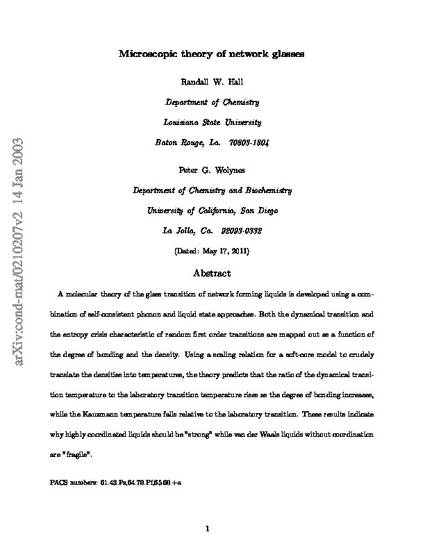
A theory of the glass transition of network liquids is developed using self-consistent phonon and liquid state approaches. The dynamical transition and entropy crisis characteristic of random first-order transitions are mapped as a function of the degree of bonding and density. Using a scaling relation for a soft-core model to crudely translate the densities into temperatures, theory predicts that the ratio of the dynamical transition temperature to the laboratory transition temperature rises as the degree of bonding increases, while the Kauzmann temperature falls explaining why highly coordinated liquids are “strong” while van der Waals liquids without coordination are “fragile.”
Copyright 2003 American Physical Society.
This article may be downloaded for personal use only. Any other use requires prior permission of the author and the American Physical Society.
Available at: http://works.bepress.com/randall_hall/65/
